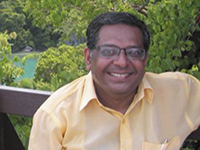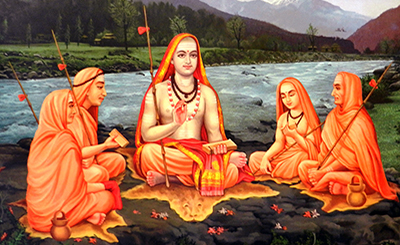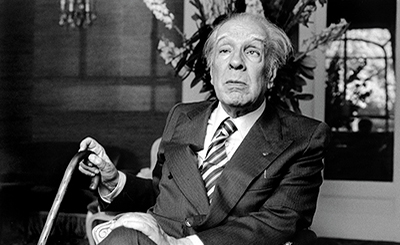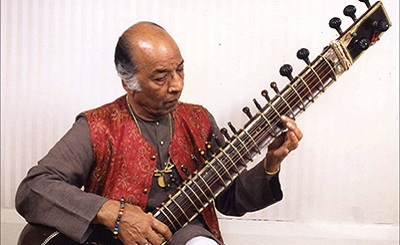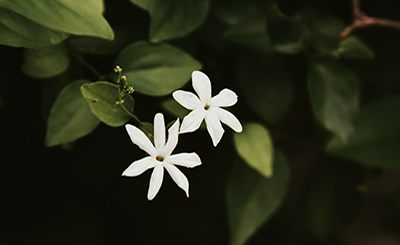
Sunil Kant Munjal. Photo courtesy of Serendipity Arts Trust
Serendipity Arts Festival, held in Goa in December, is a heady smorgasbord of arts and culture. A brainchild of Sunil Kant Munjal, the multi-disciplinary fest aims to highlight interconnectedness of arts and redefine the way people connect with arts
We are getting used to it — the third week in Goa will be heady — a smorgasbord of culture and style if you will. While the first edition of the Serendipity Arts Festival (SAF) had set the bar extremely high, the second edition raised the bar even further. With an increased number of venues — this multi-disciplinary fest covers visual arts, theatre, music, dance, culinary arts, photography, crafts and special projects. While the number of disciplines remained the same, the number of venues actually went up to ten. Showcasing and interweaving this diverse range of disciplines is never easy, but the festival managed to draw in a far greater number of audiences, both local and international, wowing them with the quality, even the dexterity of content.
A triumph of hope, this is the brainchild of Sunil Kant Munjal, Chairman, The Hero Enterprise and Chief Patron, Serendipity Arts Festival. Looking far more relaxed as the second edition drew widespread applause, Munjal says in India, art is either seen as elitist, or mediocre. And several of the traditional arts were threatened with extinction due to lack of support and patronage. And this is a perception he wants to tackle. He also feels the arts must be remunerative, stressing that the arts must be able to retain talent and emerge as a viable career option. In this interview, he explains the need for corporate philanthropy and impact investing for the arts, and why it is vital to present India’s traditional skills in a modern and contemporary format that is more easily acceptable to the audience of today. Excerpts from the interview:
Suman Tarafdar: Serendipity Arts Festival has set an enviable benchmark. What was your personal takeaway from it?
Sunil Kant Munjal: There were many takeaways. First, that there is room in India for the arts to flourish and be accepted, provided it is presented in the right format. Second, art is not an elitist activity; it can be enjoyed by all Indians, provided the right opportunities are created and the right exposure is given. Third, scale is important in India. People were bowled over by the quality and diversity of Serendipity — they had never seen so much of India in one place before.
Suman Tarafdar: What led to the formation of Serendipity as a cultural festival/platform?
Sunil Kant Munjal: I have been in several conversations about the arts in India; art is either seen as elitist, or mediocre. Serendipity was set up to change this perception.
Also, we felt that India’s arts, over the centuries, had somehow lost its interdisciplinary nature and inter-connectedness; it existed mostly in silos, like the western system. It was also quite clear that several arts were dying or losing their essence. As the profession is not remunerative, artists, artisans and craftsmen are moving to cities, and giving up their skills. We feared that if the trend continued India’s culture and heritage would eventually get lost. Most skills related to the arts and craft in India have been passed through the ages; there are no blue books documenting skills.
Nowhere in the world has arts and culture flourished without patronage. Lack of patronage means that the young don’t get exposure to different aspects of the arts to make up their minds on whether they like it or not.
So SAF was developed as a scale initiative to address the issues that I’ve just flagged: bring back interdisciplinarity; revive dying arts through support and proper documentation; reintroduce patronage; and inject enthusiasm in the arts amongst the youth. Plus, our intent with SAF is also to open conversations across fields, disciplines, experts and genres. We see Serendipity as a cultural platform that would make art inclusive, immersive and accessible to all, and the Serendipity Arts Festival is a cultural experiment.
Suman Tarafdar: What are the most urgent requirements that traditional arts need to flourish in India?
Sunil Kant Munjal: The arts must be remunerative; the arts must be able to retain talent and emerge as a viable career option. Opportunities to learn and showcase need to increase.
Through strong communication, all involved stakeholders — citizens, corporates and the state – must be made aware of their responsibility to make the performing and visual arts sustainable, and turn these into a dynamic, creative industry. Self Help Groups, co-operatives and private sourcing initiatives need to be promoted in rural areas to upgrade traditional skills in both visual and performing arts. This sector requires visible financial support, so corporate philanthropy and impact investing must be actively promoted and supported. Quality can play an important part in adding sheen to Indian art. So, the corporate sector must be involved in providing design, logistics and other muscle, where relevant.
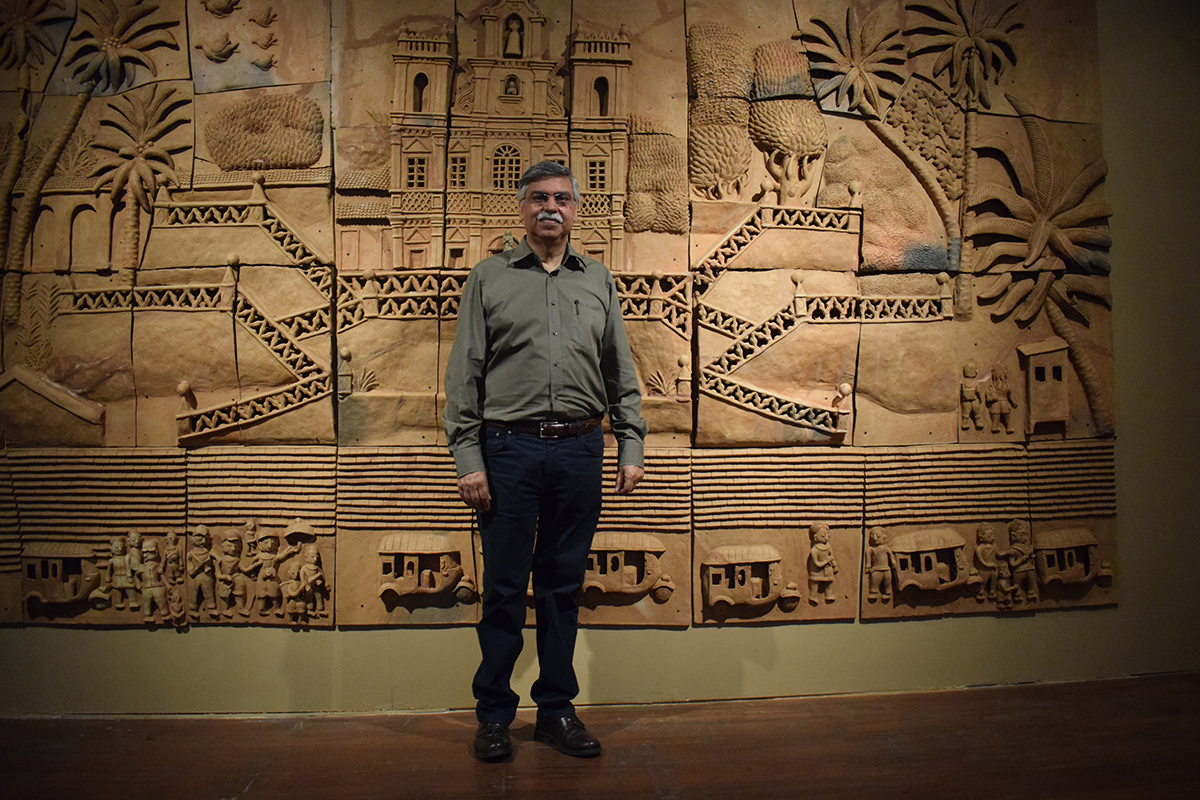
Sunil Kant Munjal at the Serendipity Arts Festival, Goa, December 15-22, 2017. Photo: The Punch
Suman Tarafdar: How do you see the role of patronage in the arts?
Sunil Kant Munjal: In any era, activities like education, research, culture and the arts can only thrive through patronage — patrons and philanthropists need to play a crucial role.
Besides, arts and culture is the single most important bridge between a country’s past and its future; and if this bridge collapses, a country will struggle to discover itself. India has had a rich tradition in art patronage — but this practice mostly died with the demise of kingdoms and native states.
Art patronage needs to be revived and philanthropy must be fully supported —whether at the state level, the industry level or in PPP mode. It needs full fiscal and budgetary support, and a mechanism must make the arts attractive to VC firms and angel investors.
Suman Tarafdar: Now that the trust has done a couple of festivals, what have been the learnings?
Sunil Kant Munjal: It was a wonderful to develop a platform where multiple individuals and institutions could come together.
We also learnt that it is very important to inform people well in advance about programmes; this enables proper scheduling.
Also, festivals can create a buzz, but the real work of promoting and developing the arts needs to happen behind the scenes. Mentoring, residency and skilling programmes must continue throughout the year. Strong work is also required in the area of art research — and these initiatives must be sustained throughout the year.
Suman Tarafdar: From the responses to the festival, what have been the most encouraging aspects and where do you see the biggest challenges?
Sunil Kant Munjal: The quality, the scale, and the styles were highly appreciated. The experiment with interdisciplinarity released new energy. It was especially encouraging to see the responses and the fervour of the youngsters who came in. It gave us great satisfaction to create a truly inclusive festival with school children, amateurs, adults, professionals, historians, curators and cultural experts coming together and participating. The festival was also uniquely friendly for the differently abled, with wheelchair access, sign language, Braille, etc.
Of course, no matter what we did or attempted, we couldn’t do full justice to the rich culture of the subcontinent. For this festival to thrive and truly be contemporary, individuals, companies, and institutions must get involved and turn this into a mission, which serves not just national, but also international needs.
Sunil Kant Munjal at the Serendipity Arts Festival, Goa, December 15-22, 2017. Photo: The Punch
Suman Tarafdar: What kind of efforts will be needed for the revival of many disappearing arts in India?
Sunil Kant Munjal: Art and culture preservation is something we need to learn from the Western countries, or even some of the other Asian countries. It is also vital to present India’s traditional skills in a modern and contemporary format that is more easily acceptable to the audience of today.
To give an example, at the Serendipity Arts Festival, we undertook multiple projects to help artisans tweak their products and designs to make them desirable for contemporary art buyers and users. The sale of these products was permitted to let artisans see the possibilities emerging from their skill.
Suman Tarafdar: How effective has the public sector, including government ministries and institutions, been in aiding and preserving traditional arts?
Sunil Kant Munjal: A beginning has been made in some areas — and many public sector agencies are working very hard; but many of the initiatives need to be handled more efficiently. A unified and cohesive effort is vital across ministries and government departments; and the private sector must be made an integral part of this unification and consolidation process.
Suman Tarafdar: In what ways will the Serendipity Arts Trust work to revive the arts, besides the festival?
Sunil Kant Munjal: Besides organising festivals and cultural events in different locations, we have also held exchange programmes by various artists between India and other countries. Our idea has been to give local artists and artisans exposure to different cultures and audiences.
We are also undertaking residency programmes in multiple arts disciplines to strength and broaden existing skills in this area. We are also looking at developing long-term projects aimed at creating livelihoods and helping artisans improve their craft, and connecting them to markets.
Suman Tarafdar: You had mentioned taking the festival to other venues as well. What is happening on that front?
Sunil Kant Munjal: We have already started hosting smaller versions and curtain-raisers of the flagship festival in Delhi; a couple of others are being planned in Mumbai and Bangalore. This festival belongs to everybody — and not just a particular region. We are hoping that more Indian corporates, institutions and state government get involved and help us create a truly global festival of the South Asian arts. In this way, the festival can genuinely become a bridge between India, its neighbourhood and the rest of the world.
More from The Byword
Comments
*Comments will be moderated



